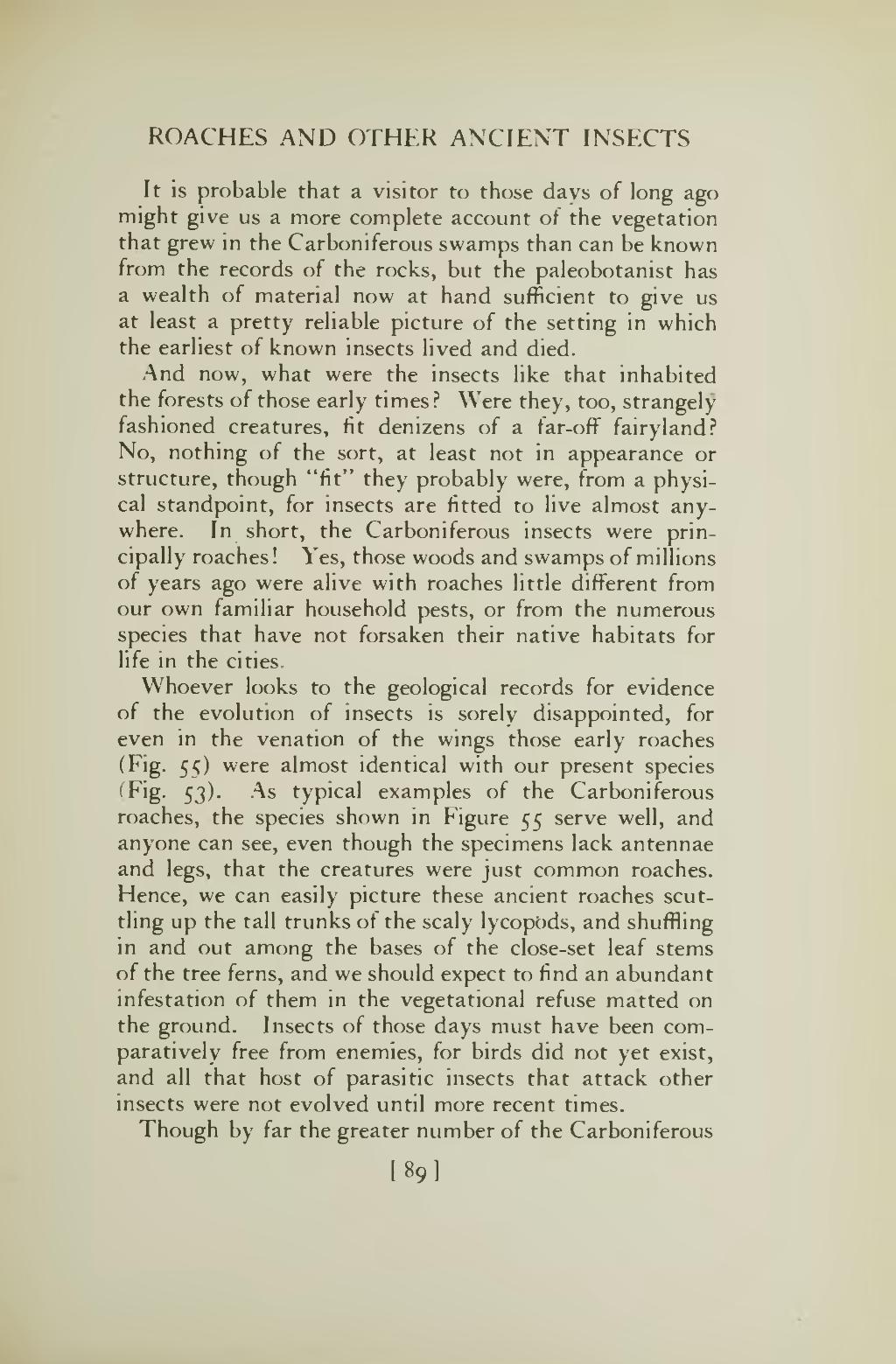ROACHES AND OTHER ANCIENT INSECTS
It is probable that a visitor to those days of long ago might give us a more complete account of the vegetation that grew in the Carboniferous swamps than can be known from the records of the rocks, but the paleobotanist has a wealth of material now at hand sufficient to give us at least a pretty reliable picture of the setting in which the earliest of known insects lived and died.
And now, what were the insects like that inhabited the forests of those early times? Were they, too, strangely fashioned creatures, fit denizens of a far-off fairyland? No, nothing of the sort, at least not in appearance or structure, though "fit" they probably were, from a physical standpoint, for insects are fitted to live almost anywhere. In short, the Carboniferous insects were principally roaches! Yes, those woods and swamps of millions of years ago were alive with roaches little different from our own familiar household pests, or from the numerous species that have not forsaken their native habitats for life in the cities.
Whoever looks to the geological records for evidence of the evolution of insects is sorely disappointed, for even in the venation of the wings those early roaches (Fig. 55) were almost identical with our present species (Fig. 53). As typical examples of the Carboniferous roaches, the species shown in Figure 55 serve well, and anyone can see, even though the specimens lack antennae and legs, that the creatures were just common roaches. Hence, we can easily picture these ancient roaches scuttling up the tall trunks of the scaly lycopods, and shuffling in and out among the bases of the close-set leaf stems of the tree ferns, and we should expect to find an abundant infestation of them in the vegetational refuse matted on the ground. Insects of those days must have been comparatively free from enemies, for birds did not yet exist, and all that host of parasitic insects that attack other insects were not evolved until more recent times.
Though by far the greater number of the Carboniferous
[89]
